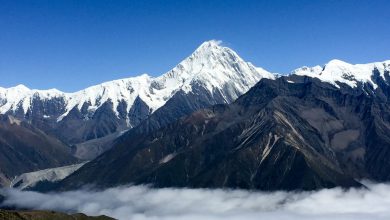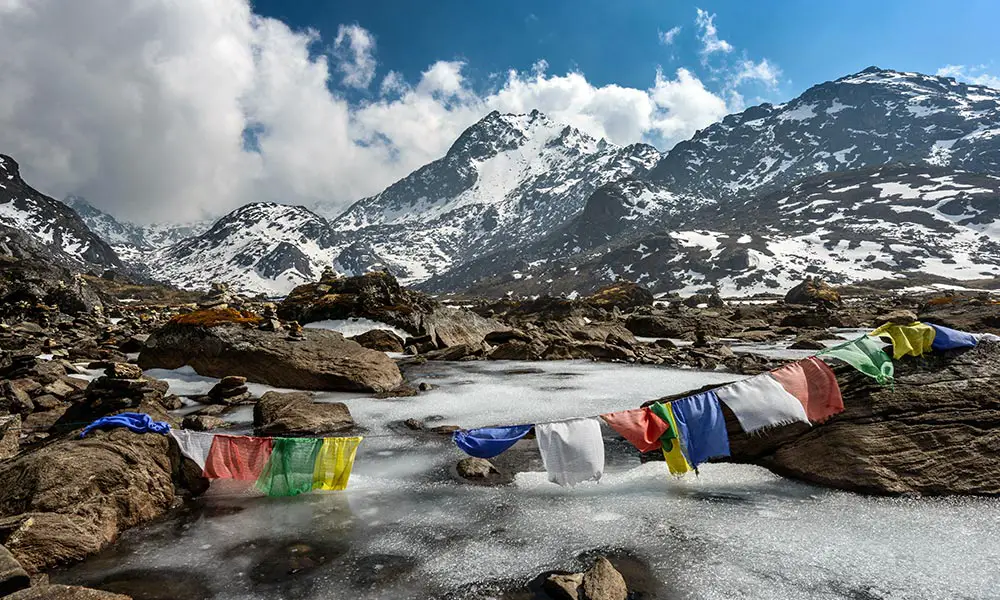
Which Country Owns the Himalayas?
The Himalayas are the majestic mountain range located between the Tibetan Plateau and the Indian subcontinent. The Himalayan mountain range spreads over 2,500 kilometers from Pakistan in the west to Bhutan in the east. A large part of the Himalayas lies in the countries of Nepal, India, and China (Tibet).
But which country owns the Himalayas? You might wonder. Well, the mountain range is not owned by any single country. However, Nepal and China (Tibet) have sovereignty over most of the mountain peaks of this range, including a large share of the 8000m peaks.
A huge number of the Himalayas remain located at the junction of Nepal and China. This includes the majestic mountain peak of Mount Everest (8848.86m), which is the tallest peak in the world. Mount Everest is also known as Qomolangma in Tibetan and Sagarmatha in Nepali. Among the top 10 highest mountains in the world, 8 of them lie in the Himalayan region of Nepal.
Various mountaineering expeditions take place in the Himalayas and their stunning mountains. You will pass through beautiful terrains to arrive at the top of the summit in these expedition journeys. Most of these expeditions are done from the Southern route, which lies in Nepal.
There are incredible trekking journeys in the foothills of the Himalayas, with the base camp as the ultimate destination. This spectacular mountain range forms a barrier between the northern Tibetan plateau and the southern alluvial plains of the Indian subcontinent. There are around 110 towering peaks in the Himalayan range with many 8000m mountains.
The Himalayas are of great religious significance, with the sentiments of the local people attached to them. The Himalayas are mentioned in the sacred texts and mythologies of Hinduism and Buddhism. The mountains are treated as holy deities, with the pilgrimage tour of the mountain also quite popular.
Himalaya, which means the abode of snow, has remained the prime adventure destination all around the world. Moreover, the serene rivers of the region, including the Ganges, Indus, and Brahmaputra, originate from the Himalayas. Some sacred Himalayan mountains, like Gangkhar Puensum, Kailash, Machapuchare, and Nanda Devi, are not allowed for expeditions.
The sovereignty of the Himalayas in the northwest Kashmir region is disputed between three countries of Pakistan, India, and China. The Karakoram and the Hindu Kush ranges lie on the northwest border of the Himalayas. There is the Tibetan Plateau in the north, whereas the Indo-Gangetic Plain lies south of the Himalayas border.
The northernmost section of the Himalayas remains located in Pakistan, Kashmir, and Ladakh (India). There are large sections of the northern Himalayas in Tibet, whereas you can find the southern foothill in Nepal, India, and Bhutan. Pakistan has 32,400 square miles (83,900 square km) of the Himalayas north and west of the “LOC”.
Moreover, the Line of Control (LOC) between India and Pakistan was established in 1972. China controls over 14,000 square miles (36,000 square km) in the Ladakh region and a disputed part of Arunachal Pradesh. However, there are ongoing disputes and boundary issues between these countries.
The starting point of the Himalayas in Tibet is Nanga Parbat in the west to Namcha Barwa next to the Yarlung Zangbo River in the east. The southern border includes numerous mountains that share their geographical locations with Nepal. This includes Mount Everest (8,848.86 m).
The Mahakali River in the west is the border for the Himalayas in Nepal. The eastern boundary of the Himalayas in Nepal is the Sikkim State of India. This region is home to numerous 8000 m and 7000m snow-clad mountains. Nepal-Tibet border contains most of the top 8000m Himalayas, including Mt. Everest (8848 m), Makalu (8485m), Kangchenjunga (8586m), Manaslu I (8163m), Dhaulagiri I (8617m), Annapurna I (8091m), and others.
Bhutan has a small area of the Himalayas in its landlocked boundaries, with China to the north and India on all sides. In conclusion, no single country owns the Himalayas as it is spread over several countries. And the sovereignty of the mountains are divided between these countries.

